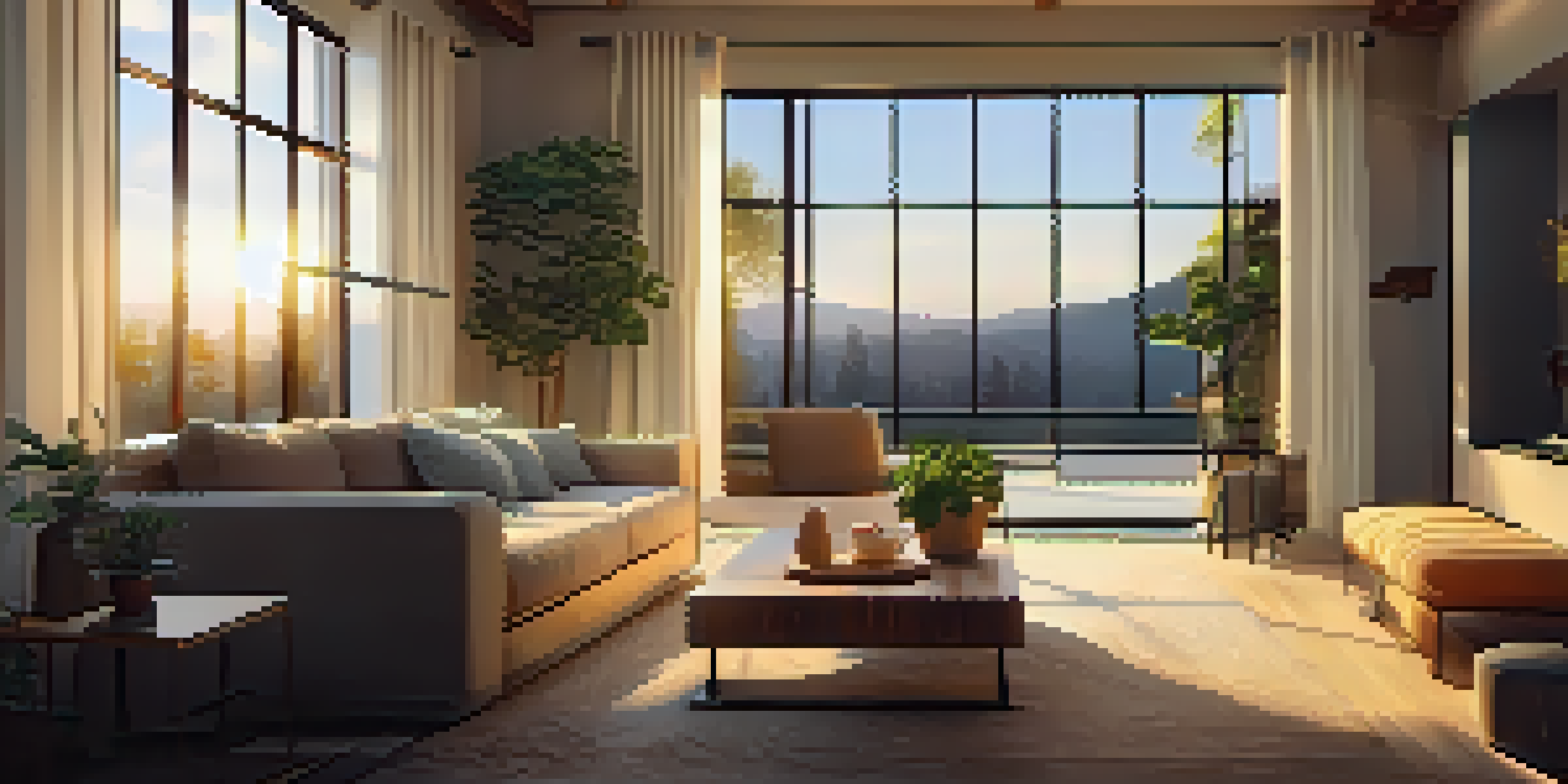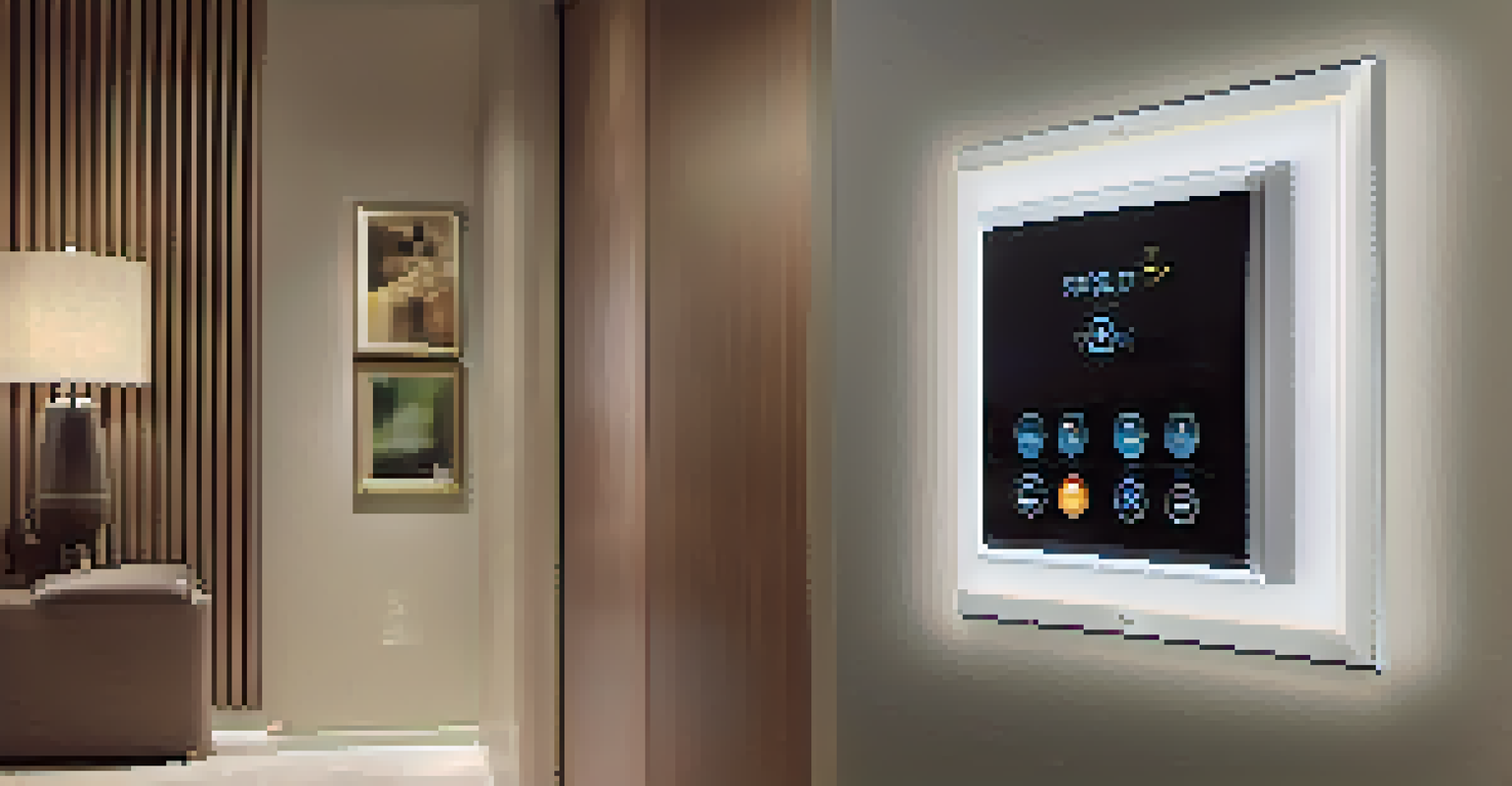Lighting Control: Automate for Energy Savings at Home

Understanding Lighting Control Systems for Homes
Lighting control systems are designed to manage the lighting in your home efficiently, allowing you to adjust brightness and color temperature according to your needs. These systems can be as simple as dimmer switches or as complex as smart home integrations that sync with your daily routines. The convenience they offer not only enhances your living space but also contributes to energy savings.
Lighting is the first step in setting the mood for your home.
Imagine coming home after a long day and having your living room lights automatically turn on to a warm glow as you walk in. This is just one example of how lighting control systems can create a welcoming atmosphere while minimizing energy waste. By understanding the different types of systems available, you can choose the one that best fits your lifestyle.
From motion sensors that turn lights off when a room is unoccupied to programmable timers that adjust lighting based on the time of day, these systems help you take control of your energy consumption. By implementing lighting control, you can enjoy a comfortable home environment while also being kind to your wallet and the planet.
Key Benefits of Automating Your Home Lighting
Automating your home lighting offers various benefits, the most significant being energy savings. With smart lighting, you can easily set schedules or use sensors to ensure lights are only on when needed. This not only lowers your energy bills but also reduces your carbon footprint, making it a win-win situation.

Another advantage is the convenience factor. Imagine being able to control your lights with just your voice or through an app on your phone. Whether you're snuggled up on the couch or away on vacation, you can adjust your home lighting from anywhere, enhancing both comfort and security.
Benefits of Smart Lighting
Automating your home lighting significantly enhances convenience, improves ambiance, and promotes energy savings.
Lastly, automated lighting can significantly improve your home's ambiance. You can customize the brightness and color of your lights to match your mood or the occasion, creating a warm and inviting atmosphere. This flexibility adds a personal touch to your living space, making it feel more like home.
How to Choose the Right Lighting Control System
When selecting a lighting control system, consider factors like your home’s layout, existing wiring, and your lifestyle needs. For example, if you have a busy household, look for systems that offer easy-to-use interfaces and voice control options. On the other hand, if you prefer a more hands-on approach, traditional dimmers and timers might suffice.
The goal of automation is to make our lives easier while saving energy and time.
It's also essential to assess whether you want a standalone system or one that integrates with other smart home devices. A unified system can create a seamless experience, allowing you to control not just your lighting but also your heating, security, and entertainment systems from a single platform.
Additionally, keep in mind the scalability of the system. You may start with a few smart bulbs or switches, but as your needs change, you might want to add more features or zones. Choosing a flexible system ensures that your lighting control evolves with you and your home.
Installation Options: DIY vs. Professional Help
Deciding between a DIY installation or hiring a professional depends on your comfort level with technology and electrical work. Many smart lighting products are designed for easy installation, allowing homeowners to set them up without needing extensive technical knowledge. This can be a cost-effective way to upgrade your lighting control.
However, if you're dealing with complex systems that require wiring or integration with other home automation features, it might be best to consult a professional. They can ensure everything is installed correctly and efficiently, providing peace of mind and saving you from potential headaches down the line.
Choosing the Right System
Selecting a lighting control system should consider your lifestyle, home layout, and the potential for future expansion.
Ultimately, whether you choose to go the DIY route or hire a pro, the goal is to create a lighting system that enhances your home while saving energy. By weighing your options and understanding your capabilities, you can make the best choice for your situation.
Integrating Smart Lighting with Other Home Systems
Smart lighting can be integrated with various home systems, such as security cameras, thermostats, and even home entertainment systems. This integration can elevate the functionality of your home, allowing for seamless control and enhanced security. For instance, your lights can flash if a security camera detects motion, alerting you of potential intruders.
Additionally, syncing your lighting with your thermostat can optimize energy use. For example, setting your lights to dim as the temperature rises can create a more comfortable environment while reducing air conditioning costs. This interconnected approach maximizes your energy savings while enhancing your overall home experience.
By leveraging these integrations, you can create a smart home ecosystem that works together to simplify your life. This not only saves energy but also provides you with a greater sense of control and convenience, making your home more enjoyable.
Monitoring Energy Use: Insights from Smart Lighting
One of the incredible features of smart lighting systems is their ability to provide insights into your energy usage. Many systems come equipped with apps that allow you to monitor how much energy your lights consume over time. Understanding this data can help you identify patterns and make informed decisions about your lighting habits.
For instance, if you notice that certain lights are used more frequently than others, you might consider switching to LED bulbs in those areas to further reduce energy consumption. This proactive approach can lead to significant savings on your energy bills, making your home not only smarter but also more efficient.
Future of Lighting Technology
Emerging trends in lighting control technology, including AI and IoT, promise smarter, more integrated solutions for homes.
Moreover, by being aware of your energy use, you can set goals for reducing consumption and track your progress. This awareness fosters a more sustainable lifestyle and encourages you to make changes that benefit both your wallet and the environment.
Future Trends in Home Lighting Control Technology
The field of lighting control technology is rapidly evolving, with new innovations continually emerging. For example, advancements in artificial intelligence (AI) are leading to smart lighting systems that can learn your habits and preferences. Imagine coming home to lights that automatically adjust to your favorite settings without you lifting a finger.
Additionally, as sustainability becomes a significant focus, we can expect more energy-efficient lighting solutions and systems that promote eco-friendly practices. These developments not only support energy savings but also contribute to a healthier planet, aligning with a growing consumer demand for sustainable living.

Finally, the rise of the Internet of Things (IoT) means that our devices will increasingly communicate with each other. This connectivity will create more integrated and intuitive smart home environments, offering enhanced user experiences and unprecedented control over our living spaces.